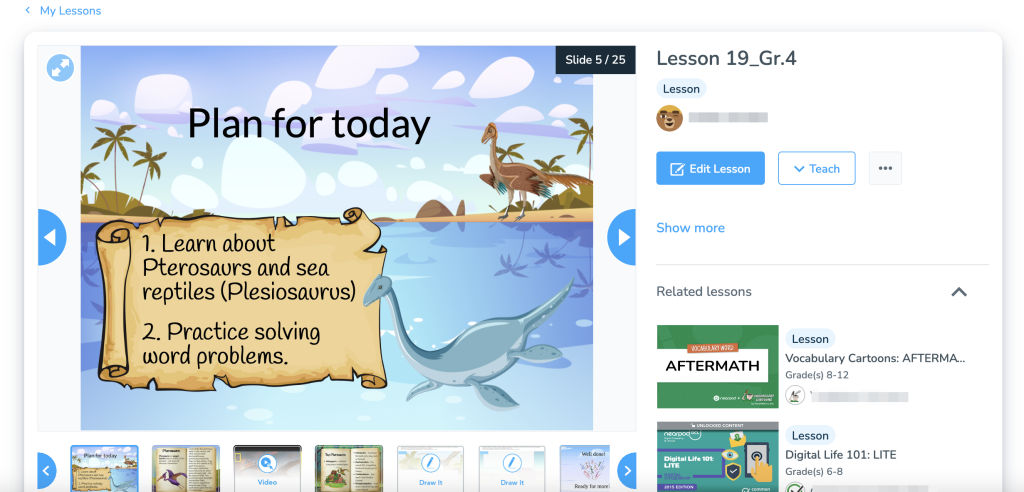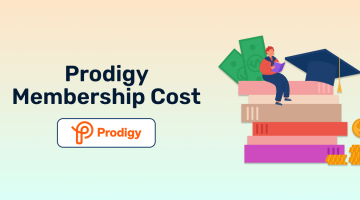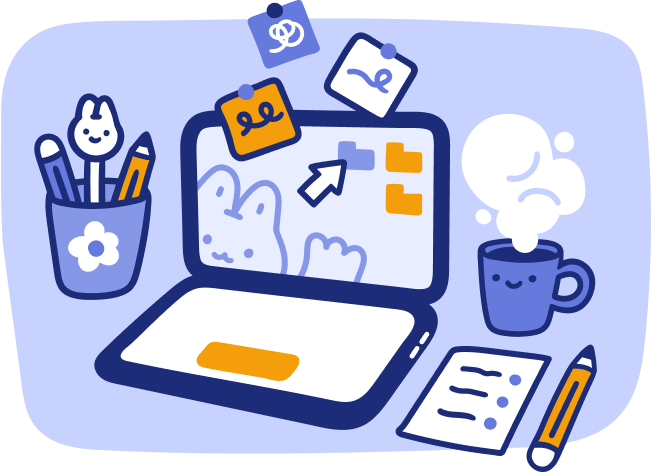Metacognitive Strategies in Customized Math Learning
reviewed by Jo-ann Caballes
Updated on September 16, 2025
Remember when learning math felt hard? Fortunately, as a tutor with years of expertise, I can introduce a new way on how to make it more convenient for students. I’ll tell you about what metacognition and metacognitive strategies are and how you can apply them. While there are several ways to make learning math a little more unique and quicker, you might want to visit Brighterly math and reading platform to check for options on customized math learning. But first, let’s define metacognitive skills and strategies.
Key points
- Metacognition is the ability to think about and regulate your own thinking, helping students become more independent and strategic learners.
- Teachers play a crucial role by coaching students in metacognitive thinking, not just delivering answers.
- Customized educational platforms like Brighterly can integrate metacognitive strategies for learning math in lessons, offering the right level of challenge at the right time. It provides various activities that can make studying math program fun.
What are metacognitive skills?
Metacognitive skills are the talents that help you “think about your own thinking.” They let a student take a step back and look at their own learning process from a higher point of view.
Primary components of metacognitive skills
- Metacognitive knowledge: This is what you know about how to learn. It includes what you know about yourself as a learner (for example, “I learn best by seeing visual examples”), what you know about different strategies (for example, “I know that I should underline the key information first when I have a word problem”), and what you know about the task itself (for example, “This problem needs multiple steps to solve”).
- Metacognitive regulation: This is how you keep track of what you’re learning. It is an ongoing process that goes through a cycle:
- Planning: Choosing how to do something and how to use the resources you have before you start.
- Monitoring: Checking your understanding and progress while you work.
- Evaluating: After the task, looking at the end result and how well your chosen techniques worked.
What are metacognitive strategies?
Metacognitive strategies meaning is the precise, doable things that students do to strengthen their metacognitive skills. They are plans that people make for how to do a learning assignment.
Students’ needs drive strategies like these, but teachers are crucial to their development. Teachers must learn to deliver metacognitive coaching instead of direct instruction, which is becoming increasingly crucial in modern education. These methods are crucial for learning math your way. A customized platform can provide students the right level of difficulty at the right moment, but they must learn how to handle it, learn from their failures, and apply it to their knowledge.
Online teaching master’s programs allow teachers to apply metacognitive strategies in the online classroom to enhance student independence. Teachers can clearly teach metacognition and assist students in understanding their learning data with these methods.
Platforms like Brighterly make this process easier by combining expert online math tutors with a flexible learning schedule and personalized lesson plans. Brighterly’s adaptive math activities make sure that each student gets the right level of challenge at the right time, encouraging self-reflection and resilience.
Students can learn to manage their pace, identify areas for improvement, and apply new strategies. This way, Brighterly becomes a kind of mental gym that lets students learn on their own.
Now, take a short quiz to see how metacognition works in real life.
Which of the following is an example of metacognition?
Think about a student who gets a math problem wrong on a personalized learning app to see how this idea works in real life.
- The student says to himself, “I’m just bad at math.”
- The student clicks “try again” and swiftly types in a new response.
- The student stops and asks themself, “What did I do wrong in my thinking?” Was it just a mistake in my math, or did I not comprehend what negative exponents meant?
The correct answer is C. It demonstrates metacognitive activities since the student isn’t just reacting; they’re also keeping an eye on their comprehension, judging their approach, and figuring out what went wrong so they can learn from it. This kind of thinking is what makes people grow.
Up next, let’s proceed to the list of metacognitive strategies you can apply as you go through your math learning.
9 best metacognitive strategies for students (K-12)
- The “Think-Aloud” method for solving problems
- Systematic error snalysis for deeper understanding
- Goal setting and path planning for student agency
- Self-questioning prompts to guide thinking
- The “Learning Wrapper” for structured reflection
- Concept mapping and summarization for synthesis
- Confidence rating and targeted practice
- The “Why” inquiry for conceptual understanding
- Strategic time and effort management for building resilience
Metacognitive strategy #1: The “Think-Aloud” method for solving problems
The “Think-Aloud” protocol is when you say what you’re thinking as you work through a difficulty. It takes the internal dialogue of learning and puts it outside, which makes it easier to find mistakes and explain your thinking.
How “Think-Aloud” metacognitive approach works in customized math
A student uses a tablet or computer to work on a problem and walks through each step. This makes things take longer, stops students from making rash selections, and makes them explain their choices.
- Example (K–5): A student might say, “Okay, I’m in the ones place,” when they are working on 42 – 17. I can’t take 7 away from 2, therefore I have to borrow from the tens spot. The 2 turns into a 12, and the 4 turns into a 3. Now, 5 is the answer to 12 minus 7. Plus 3 and minus 1 is 2. The answer is 25.”
- Example (6–12): A student might say, “My goal is to isolate ‘x'” when they are working on an algebra problem. I observe adding and multiplying. I should do the addition first because that’s how the order of operations says to do it. So, before I divide by 2, I will take 8 away from both sides of the equation.
Metacognitive strategy #2: Systematic error analysis for deeper understanding
This is more than just fixing a bad answer. It means figuring out what kind of mistake it is in order to find out what caused it and stop it from happening again.
Metacognitive learning strategies: Error analysis in customized math
Customized learning systems give students a dashboard or report of their blunders. The student sorts their mistakes into groups instead of merely looking at the score. A teacher typically helps them do this.
Example: A student looks over their work on a “Fractions” module and sees that they keep getting problems wrong. They figure out that their problems aren’t with the idea of fractions itself, but with figuring out the lowest common denominator.
This insight tells them exactly what subskills they need to work on. Then, they can either tell their teacher, “I need more help finding the LCD,” or they can look for a course on that subject on their learning platform.
Metacognitive strategy #3: Goal setting and path planning for student agency
This plan calls for students to take an active role in deciding what they want to study and how to use the tools they have to do so.

Metacognitive strategies examples: Implementing goal setting in customized math
- Example (K–5): A pupil realizes that they can add but not subtract using regrouping. Their new objective is to “finish the ‘Subtraction with Regrouping’ unit this week and get the progress bar to 100%.”
- Example (6–12): A high school student studying for an exam looks at their dashboard and discovers that they don’t know much about “Logarithmic Functions.” They made a plan: “For the next three days, I will spend 20 minutes a day on the logarithms module, working on the practice problems until I get at least 90% on the quiz.”
Metacognitive strategy #4: Self-questioning prompts to guide thinking
This means giving pupils a list of questions to think about before, during, and after they try to solve an issue.
Metacognition strategies in math: How self-questioning works
- Before starting: “What does this problem want me to do? What do I know?”, “Have I ever seen a problem like this before?”
- During the process: “Is my strategy working?”, “Does this step make sense?”, “Should I stop and think about what I’m doing?”
- After finishing: “Does my answer make sense?”, “How can I know whether my work is good?”, “What did I learn from this problem that I can use on the next one?”
A lot of platforms offer “hints” or “scaffolding,” which are typically just automated variations of these queries. The idea is for students to learn this procedure so well that they don’t need the suggestions.
Metacognitive strategy #5: The “Learning Wrapper” for structured reflection
A “wrapper” is a short activity that goes around a learning task, such as a 15-minute math app session. It employs short prompts to get people to think about their plans and actions.
Other than these activities, you can consider doing short games to break the ice and make learning more enjoyable. Brighterly math tutoring platform offers a great selection of interactive games and valuable learning resources designed to keep students motivated and engaged.
Metacognitive strategy instruction: How to use “Learning Wrapper” in the right way
Before a student begins their individualized math lesson, they spend 30 seconds answering a pre-reflection prompt. They take a minute to answer a question on what they just did after they are done.
- Pre-activity prompt: “The lesson for today is how to figure out the area of a triangle.” How sure are you on a scale of 1 to 5? What do you think will be the most difficult part?
- Post-activity prompt: “What was the most common mistake you made during the lesson?” Find one item you learned that helped you deal with the challenges. How sure do you feel now? This helps the pupil remember what they’ve learned and see how they’ve grown.
Metacognitive strategy #6: Concept mapping and summarization for synthesis
This method means taking what you learned from a digital course and putting it into a different format, such as a diagram or a written description. This act of translation makes the brain find the key ideas, the supporting details, and the connections between them.
How metacognitive strategies in education support concept mapping
The learner doesn’t instantly move on after finishing a module or a set of lessons on a platform. They stop for 5 to 10 minutes to put the information together in a digital notepad or offline.
- Example (K-5): For example, after a session on different kinds of polygons, a student makes a chart. They make columns for “Triangle,” “Square,” and “Hexagon” and write down how many sides and corners each one has. This makes their comprehension of the different properties stronger.
- Example (6-12): A student makes a concept map after learning about functions. They write “Function” in the middle and draw lines to “Linear,” “Quadratic,” and “Exponential.” They write the usual equation form (like y = mx + b), a little drawing of the shape of the graph, and one example from real life on each branch. This makes a strong study guide based on what they already know.
Metacognitive strategy #7: Confidence rating and targeted practice
This is a great way to keep an eye on things because students rate how sure they are about an answer before the algorithm tells them if it is right. This exercise helps them tell the difference between what they really know and what they think they know, which brings to light any misunderstandings they may have.
Metacognitive strategies in math: Applying confidence ratings
A student solves a problem from a series of practice problems and then quickly writes down or thinks about “High Confidence,” “Medium Confidence,” or “Low Confidence/Guess” before turning it in. After that, they look at their confidence rating and the actual result.
- Example: A student is working on problems that use the Pythagorean theorem.
- Scenario 1: They answer a question, say they are “High” on confidence, and get it right. This helps them remember what they learned.
- Scenario 2: They say their confidence is “Low” and get it wrong. This is normal and demonstrates that they know what they don’t know.
- Scenario 3 (the most crucial one): They say they are “High” confident but get the problem wrong. This is a warning sign. It shows that there is a basic misunderstanding. The student now knows that they need to go back and study the idea again, not just remedy a small mistake.
Metacognitive strategy #8: The “Why” inquiry for conceptual understanding
This approach takes pupils from just memorizing procedures (the “how”) to really grasping concepts (the “why”). When a platform shows a learner a rule, formula, or algorithm, the student asks themselves, “Why does this work?” or “Why do I need to do this step?”
Metacognitive learning with the “Why” inquiry
When a student learns a new arithmetic rule, they don’t immediately use it without thinking. They use the platform’s tools, such as video explanations or worked examples, or even search the web to figure out how the process works.
- Example: A student learns the rule for determining the area of a triangle: A = ½ * base * height. They don’t just memorize it; they ask, “Why is there a ½ in the formula?” They learn that a triangle is exactly half of a rectangle with the same base and height by doing a fast search or viewing a movie that explains it. They get a far deeper and longer-lasting knowledge of the idea by linking the triangle formula to the rectangle formula they already know. It’s not just a random rule anymore; it’s a logical conclusion.
Metacognitive strategy #9: Strategic time and effort management for building resilience
This technique entails educating students to carefully manage their time and mental energy. They understand the difference between productive struggle (which helps them progress) and irritating stasis (which makes them burn out). This is an important skill for learning environments where you can go at your own pace, especially in online learning.
According to Statista, online learning platforms are predicted to have 63.6 million users by 2029. With that said, managing time and effort becomes more important in customized learning.
Teaching metacognitive strategies to build resilience through time management

Students learn how to set personal time restrictions or guidelines based on how much effort they put into solving hard issues. They don’t spend 20 minutes growing more and more angry about one problem; instead, they make a plan for when to keep working on it and when to ask for help or move on.
- Example (K-5): A teacher tells the class about the “Three-Minute Rule.” For three minutes, a pupil works on a hard word problem. If students are still stuck after that, they are told to put a star next to the problem, go on to the next one, and come back to the starred problem later or ask the teacher for a tip. This stops the shutdown and keeps the learning going.
- Example (6-12): A high school student working on hard calculus problems on their platform makes a personal rule: “If I can’t come up with a good plan in the first two minutes, I’ll use the platform’s first hint. If I am still stuck after five minutes, I will flag the problem for my study group and move on so that I can finish the rest of the assignment.”
Why metacognitive skills matter in today’s customized education
With the rise of homeschooling and online learning, especially since 2020, customized education has become increasingly essential. According to Homeschooling Statistics 2025, over 4.5 million students in the US were homeschooled in 2022, showing a significant rise over the past decade. This trend highlights the need for flexible, personalized learning that meets individual student needs, and metacognitive strategies perfectly fit.
Customized math learning tools deliver personalized content efficiently but students can only reach their full potential when they take an active role in their learning. Thankfully, Brighterly makes things easier.
If you want to have a unique math learning experience, book free lesson to make learning fun together with Brighterly!

















